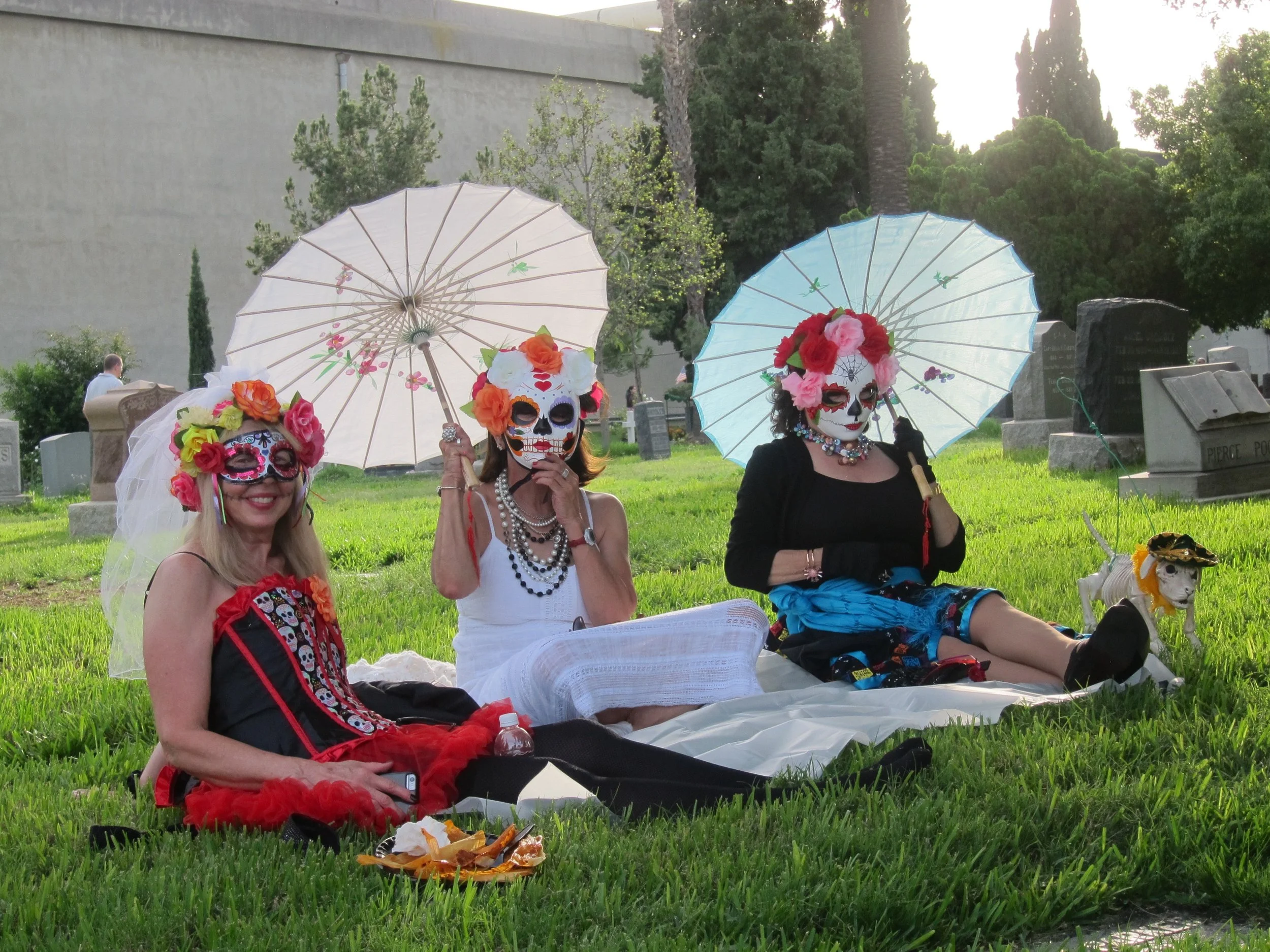Set the Table For Dia De los Muertos
The smell of incense fills the air and golden marigolds brighten drab tombstones in a cemetery full of the living dead. Faces are decorated like skulls with flowers lining their crowns, and a kaleidoscope of color transforms the monochrome Hollywood Forever Cemetery in Los Angeles, where some of our greatest stars are buried—think Johnny Ramone, Cecil B. DeMille, and Jayne Mansfield.
A Day of the Dead festival has taken over the cemetery to observe the ancient Mexican tradition of honoring loved ones who’ve passed on. I’m so overwhelmed by these intricately adorned altars that I click-click my camera at every turn.
For Dia de Los Muertos, Mexican families set up altars of many styles—from multi-tiered tables to arched, flowery entryways, with feasts set out for the beloved deceased in local churches and cemeteries like this one. But most often, they are created for private celebration in people’s homes, where families prepare the favorite foods of loved ones in order to beckon them back from the underworld to join the party.
The holiday embraces a mix of Catholic and pre-Hispanic beliefs, which includes the notion that death is simply part of the cycle of life. According to history and culture magazine México Desconocido, various deities governed different months of the pre-Hispanic calendar. Lord of the underworld, Mictlantecuhtli, ruled over the harvest’s end, corresponding to November on the Gregorian calendar. The Spaniards who brought Christianity to Mexico drew from both views to give birth to the Day of the Dead.
Evidence of the mix of two traditions is obvious on altars. For example, no shrine is complete without both a Catholic crucifix and pre-Hispanic copal incense. However, every family, let alone every region in Mexico, adheres to its own special traditions.
It is said that the spirits of children, los angelitos, arrive at midnight on the 31st, leaving at midday on November 1. Then, the adult souls arrive, remaining until November 2.
Seeking nourishment and community among family, spirits return after a long, tiring journey from the netherworld, lured home by the scent of cempasúchil (marigolds) and incense. They arrive to altars ornamentally equipped with a washbasin, towel, soap, and mirror, set for cleansing before the fiesta.
A glass of water is set out for the soul to quench its thirst, as well as other beverages. According to Oscar Vargas at El Mercadito in East L.A., they serve atole—a warm corn-based drink with cinnamon. “It’s important to choose the favorite kind of corn that the relative liked, whether it’s blue or red, or white.” Champurrado is the chocolate-flavored atole, also popular on this day.
Families ensure that visiting souls are kept happy with their most cherished foods on the altar, whether that means traditional meals like mole or tamales, or commercial snack foods like chips or candy.
Sweet foods attract the souls of departed children, and altars are decked with coconut candy, sugar cane, and pumpkin cooked in brown sugar syrup. It’s also quite common to find fruit at the altar. In the countryside, the best pieces are reserved from a family’s harvest for Dia de los Muertos.
According to Universidad Nacional Autónoma de México’s La Jornada, pan de muertos, sweet bread of the dead, is prepared especially for this holiday. Without it, the celebration would be incomplete. Depending on the region, the look of the bread can be different: sometimes shaped like a human figure, but often round to represent the cycle of life and death. A pattern of bones radiates from a center mound, which evokes the heart or the head of the deceased.
Sugar skulls are also key to any altar, as these calaveras represent individual friends and family members passed on. Sugar didn’t exist in the pre-Hispanic era, so sweet skulls were covered in amaranth—an ancient grain with a nutty texture. The names of the departed can also be written on the skulls, and sometimes the names of the living—a reminder of just how fragile life can be.
Once the dead have had their fill, they return to the netherworld satisfied, taking the smell and taste of the dishes along with them. Only then can the living dismantle the altar and savor what the dead have left for them.
As the sun dipped behind the palm trees on the horizon of Hollywood Forever, the painted faces began to dim into the darkness, and I began to wonder how many Hollywood stars might be walking among us. I know some of them wouldn’t have missed it for the underworld.





